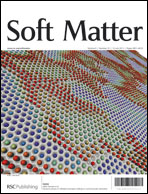Hydrophobic surfaces are of interest in many electronic devices and biomedical applications for the control of wettability and adsorption behavior. Most of the artificial hydrophobic surfaces are not biodegradable, renewable, or mechanically flexible and are often expensive, which limits their potential applications. Natural materials are better choices; however, most of them are hydrophilic and water-absorbing and general modification of molecules, expensive equipment and fluorine-containing coating cannot be avoided. In contrast, zein, a major protein of corn and an amphiphilic, biodegradable, renewable, flexible, inexpensive biopolymer, which is abundantly present in nature, satisfies all the above requirements. The objective of this work is to form a hydrophobic surface through a facile and inexpensive method of self-assembly monolayer (SAM) assisted evaporation-induced self-assembly (EISA) by zein. Scanning electron microscopy (SEM) and energy dispersive X-ray spectroscopy (EDS) were used for the characterization of surface morphology and surface elements. Water contact angle (WCA) was applied to characterize the hydrophobicity of films. Both zein concentration and solvent concentration had effects on the hydrophobicity of the film. A film with high hydrophobicity was formed by size controlled SAM assisted EISA. The WCA of the zein hydrophobic film reached 126°.

You have access to this article
 Please wait while we load your content...
Something went wrong. Try again?
Please wait while we load your content...
Something went wrong. Try again?


 Please wait while we load your content...
Please wait while we load your content...